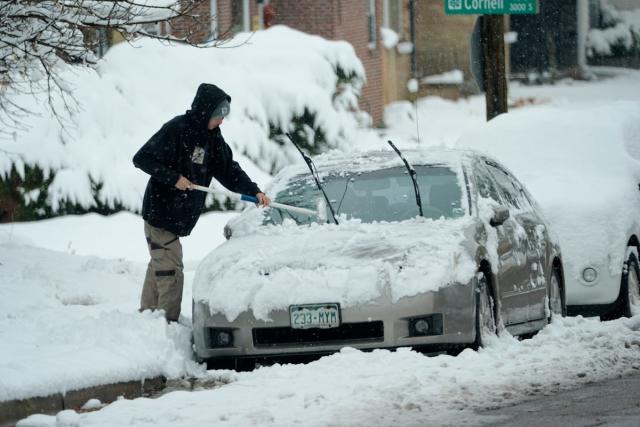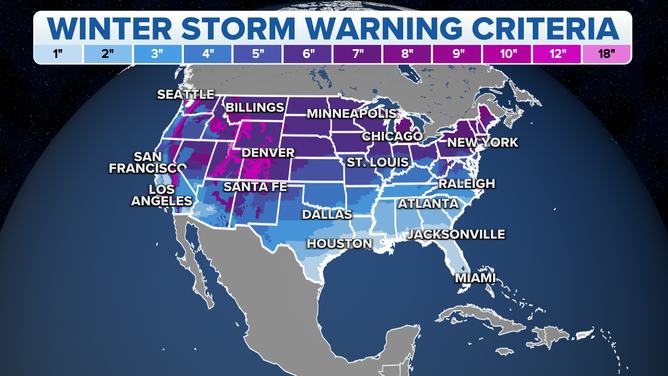Winter weather warnings and advisories are critical tools to help people prepare for hazardous conditions. These alerts, issued by the National Weather Service (NWS), provide information about upcoming snowstorms, icy conditions, and extreme cold. As the winter season sets in, understanding these warnings and how to prepare for them is essential to stay safe.
Types of Winter Weather Alerts
- Winter Weather Advisory
- Issued when: Moderate snow (3-5 inches in 12 hours), sleet under 0.5 inches, or light freezing rain is expected.
- Impact: Minor travel disruptions; slick roads.
- Action: Exercise caution when driving and ensure your car is equipped with winter essentials.
- Winter Storm Watch
- Issued when: Snowfall exceeding 6 inches in 12 hours or ice accumulation over 0.25 inches is possible within 48 hours.
- Impact: Potential for dangerous conditions that could disrupt travel and infrastructure.
- Action: Prepare for the possibility of severe weather by stocking supplies and reviewing emergency plans.
- Winter Storm Warning
- Issued when: Snowfall of 6+ inches or significant ice accumulation is imminent within 24-36 hours.
- Impact: Likely to cause major travel issues, power outages, and limited visibility.
- Action: Postpone unnecessary travel, ensure sufficient heating resources, and monitor updates.
- Blizzard Warning
- Issued when: Winds of at least 35 mph and visibility of less than 0.25 miles persist for 3+ hours.
- Impact: Life-threatening whiteout conditions and significant snowdrifts.
- Action: Avoid all travel and remain indoors with adequate supplies.
- Ice Storm Warning
- Issued when: Ice accumulation exceeds 0.25 inches.
- Impact: Extremely hazardous roads and potential for widespread power outages.
- Action: Avoid outdoor activities and prepare for prolonged power interruptions.
- Extreme Cold or Wind Chill Advisory/Warning
- Issued when: Apparent temperatures drop below -20°F or wind chills pose a risk of frostbite within 30 minutes of exposure.
- Impact: Frostbite and hypothermia risks.
- Action: Dress in layers, avoid prolonged outdoor exposure, and protect vulnerable individuals.
Preparation Tips for Severe Winter Weather
- At Home
- Keep extra blankets, flashlights, batteries, and non-perishable food items on hand.
- Insulate pipes to prevent freezing.
- Ensure your heating system is functioning properly.
- For Your Vehicle
- Carry a winter survival kit: blankets, water, snacks, a shovel, jumper cables, and a flashlight.
- Keep your gas tank at least half full to avoid freezing fuel lines.
- Drive cautiously and avoid roads with active warnings.
- Personal Safety
- Monitor local weather reports through the NWS or NOAA radio.
- Dress in multiple layers, including gloves, scarves, and insulated boots.
- Check on elderly neighbors and ensure pets are kept indoors.
How to Get Updated information in Internet Searching Winter Weather Content
- “How to stay safe during a blizzard warning”
- “What does a winter weather advisory mean?”
- “Extreme cold weather preparation tips for families”
- “Ice storm warnings and power outage safety tips”
- “Difference between winter storm watch and warning”
Suggestions for Enhancing Safety During Winter Weather Events
- Install a Weather Alert App
Use apps like AccuWeather or MyRadar for real-time notifications about warnings in your area. - Sign Up for Community Alerts
Many cities offer text or email alerts for weather-related emergencies. - Prepare for Power Outages
- Invest in a portable generator.
- Have solar chargers for mobile devices.
- Create a Family Emergency Plan
- Assign responsibilities for gathering supplies and communicating during emergencies.
- Identify a safe location in your home for shelter during extreme cold or storms.










